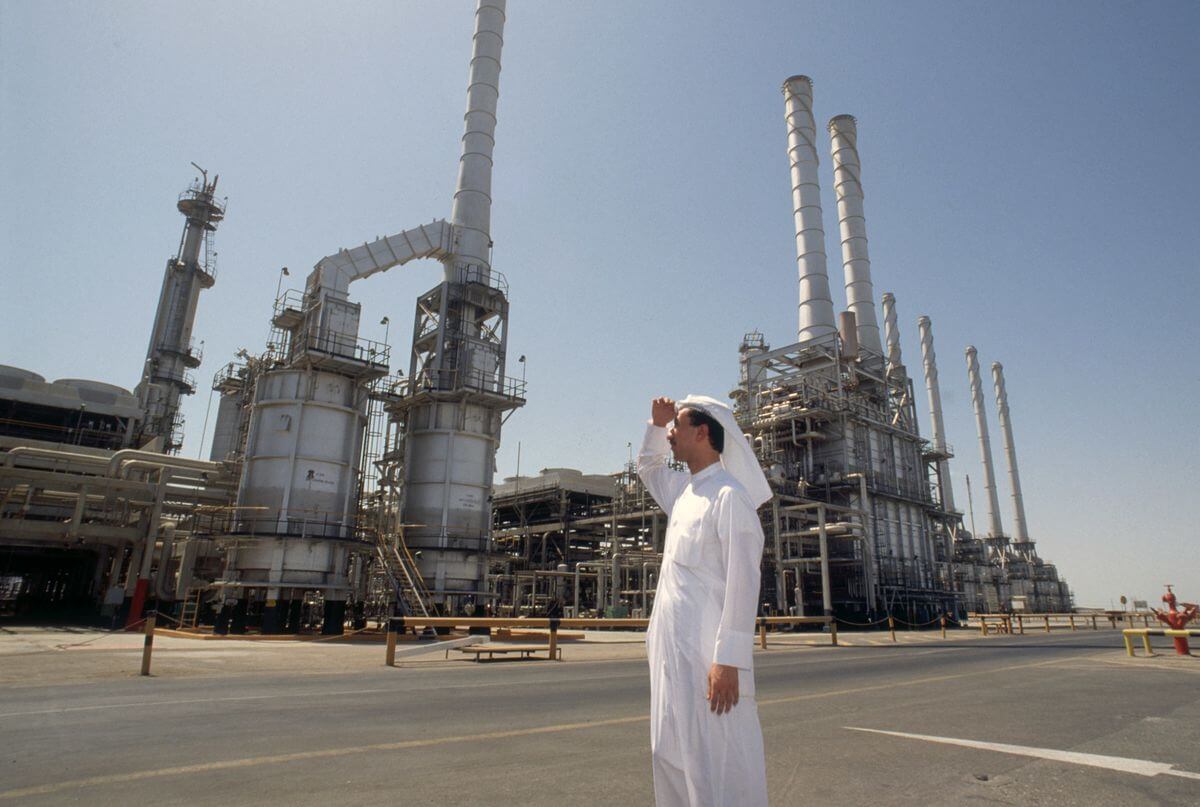In a meeting with Gulf leaders on Friday, Chinese President Xi Jinping proposed the idea of conducting oil trade in yuan instead of the United States dollar (USD).
In his keynote address at the first China-Gulf Cooperation Council (GCC) Summit in Riyadh, Xi said that they must set up “a new paradigm of all-dimensional energy cooperation.”
To this end, he assured that Beijing would “continue to import more crude oil and liquefied natural gas (LNG)” from the GCC and “strengthen cooperation in oil and gas development and clean and low-carbon technologies.”
He also assured that China would “strengthen cooperation in the upstream sector, engineering services, as well as storage, transportation and refinery of oil and gas,” and “conduct RMB settlement in oil and gas trade.” RMB is short for renminbi, the official currency of China.
China stands ready to further strengthen strategic communication and deepen cooperation across the board with Saudi Arabia to deliver for the development interests of the two countries and safeguard world peace and stability.
— Hua Chunying 华春莹 (@SpokespersonCHN) December 9, 2022
Chinese state-owned media house Global Times (GT) quoted experts as saying that the move is a necessary measure that had to be taken due to the “weaponisation” of the USD, referring to the US’ sanctions regime.
Ebrahim Hashem, a former adviser to the chairman of the Abu Dhabi Executive Office, told GT on Thursday that “using the Chinese yuan to settle a portion or all of their trade, whether it be oil-related or not, is only logical and normal, especially in light of the increasing weaponization of the dollar dominated financial system.”
“Settling their trade in their local currencies, especially in the Chinese yuan, will further cushion their trade against possible politicisation of the international financial system,” he added.
While the two sides have been in discussion on the matter for over six years, talks have accelerated this year due to the energy crisis brought on by Russia’s invasion of Ukraine.
HRH Crown Prince of Saudi Arabia 🇸🇦, Mohammed Bin Salman Al-Saud, welcomes the President of China 🇨🇳 , HE Xi Jinping, to the Arab world. 🤝
— Ebrahim Hashem 李思瑞 إبراهيم هاشم (@EbrahimHashem) December 8, 2022
pic.twitter.com/n39D0hTYph
Since then, the West’s decision to freeze Russian currency has prompted Russian President Vladimir Putin to move away from using “toxic” currencies such as the USD and Euro.
Nadia Helmy, a professor of political science at the Beni Suef University in Egypt, told GT on Wednesday that “if those active talks between Riyadh and Beijing succeed in pricing some of Saudi Arabia’s oil sales to China in yuan, then it is a step that would reduce the dominance of the dollar in the global oil market.”
“I believe that allowing oil payments to be made in yuan may pave the way for the creation of a (parallel system for international payments) in which the Chinese yuan will have the same importance and strength as the US dollar,” she opined.
By value, the RMB is the world’s fifth-most-used currency for payments, though 80% of global oil transactions are still conducted in the USD.
The move comes after the Wall Street Journal (WSJ) reported in March that Riyadh is engaged in “active talks” with Beijing and was considering the prospect of pricing oil sales to China in Yuan instead of the USD.
As per the WSJ, Riyadh has been weighing the option of including Yuan-dominated futures contracts (Petroyuan) in the pricing model of the Kingdom’s Oil Company—Aramco. This could potentially dent the US’ ability to impose harsh sanctions on China, as Saudi Arabia would not be violating US restrictions if it traded in Yuan.
Riyadh has sought greater ties with Beijing, against the backdrop of its deteriorating ties with Washington.
Washington raised concerns about human rights abuses in the Kingdom and blamed Crown Prince Mohammed bin Salman (MBS) for the murder of journalist Jamal Khashoggi. The US also removed its Patriot missile defence system from Saudi Arabia in September 2021.
Saudi officials also raised concerns regarding the US’ hasty withdrawal from Afghanistan in August last year, which resulted in the Taliban returning to power and the further destabilisation of the war-torn country.
These differences were further cemented after the Saudi-led OPEC+ agreed in October to cut oil production by two million barrels per day. Washington criticised the move, calling the decision “short-sighted” and said it indicated that OPEC+ is helping Russia. The group has refused to buckle under US pressure and has insisted that the cut will remain in place until the end of next year.
#Saudi_Arabia may accept #Yuan instead of USD for #Chinese #oil_sales. No doubt, #Foxconn's plans to build a $9b there, and #Aramco building a $10b refinery and chemicals complex in North-East #China are all synergetic. Saudi's pivot towards China is becoming a natural evolution. pic.twitter.com/1tHkHByWlO
— Marcus Goncalves (@mv_goncalves) March 15, 2022
Foreign Minister Prince Faisal bin Farhan Al Saud said in news conference after talks with Xi that Riyadh will continue to cooperate with all its partners.
“We don’t see this as a zero sum game. We do not believe in polarisation or in choosing between sides,” he remarked.
Apart from this, China and Saudi Arabia also agreed to deepen cooperation in clean and low-carbon technologies involving hydrogen, energy storage, wind and photovoltaic power and smart power grids, as well as localised production of new energy equipment.
China, the world’s largest oil importer, is Saudi Arabia’s biggest trading partner. Meanwhile, Saudi Arabia is China’s largest trading partner in the Middle East.
Saudi Arabia is also the world’s top supplier of crude oil, comprising up to 18% of China’s total crude oil purchases. According to data from Chinese customs, their bilateral trade reached $87.3 billion in 2021. From January to October 2022, Saudi imports totalled 73.76 million tonnes, or $55.52 billion.
In the lead-up to Xi’s visit, Qatar on Monday signed a historic $60 billion, 27-year-long deal to supply China with LNG.

